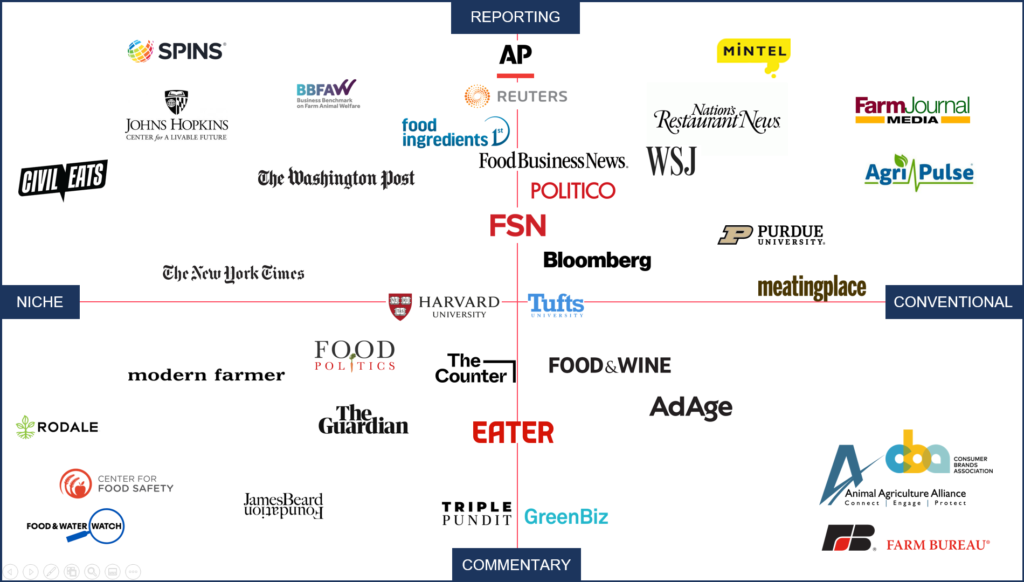May 4, 2021
Focus Feature:
Influential Figures: A Peek at the Pundits
In an era when information is so readily available, which sources do you listen to? Bader Rutter established The Intel Distillery to pinpoint the most influential voices in food production, with the idea that understanding the source is often as important as the information itself.
In the graphic below, we map out the leanings of 40 organizations, media sources, industry associations and advocacy groups that frequently report or comment on developments in food production. While far from comprehensive, our sample represents a variety of stances. We plotted the groups according to two factors:
- Reporting vs. Commentary: Refers to the primary type of content the source shares. While some sources focus on reporting developments in food production, others add more perspective on how their organization is affected.
- Niche vs. Conventional: Refers to food production methods the source discusses most. “Conventional” sources represent traditional mass food production, while “niche” sources generally represent smaller-scale, progressive production such as organic, non-GMO, antibiotic-free, etc.
This chart compares some of the most prominent sources we follow and is subject to change. Media outlets include a variety of reporters, and editorial stances may shift over time. And, over time, we’ve seen several groups shift focus from reporting events to interpreting them.
Furthermore, we at The Intel Distillery consider ourselves experts on understanding how these groups relate to one another … but the exact position of any source is still a matter of opinion. We expect you’ll take everything with a grain of salt and welcome discussion.
Stay tuned for more charts like this that address other segments of food production!
Related Articles:
The Dollar Value of ESG Policies
Focus Feature | August 18, 2022
Sharring your 'good' is good for your shares. Our research shows that adopting an ESG policy adds an average of ...
The Three Factors That Will Shape Food Production in 2022
Focus Feature | December 21, 2021
Over the past two years, persistent disruptions in supply chains and consumer behavior forced food producers to adapt far more ...
Evolution of CSR in Food Marketing
Focus Feature | December 7, 2021
One of the most evergreen trends we track at Bader Rutter's Intel Distillery has been the ever-evolving ways that brands ...
Defining Good
Focus Feature | July 28, 2021
Trends come and go, but one of the larger movements we've tracked over the years is how leaders in the ...
Doing Good Despite Adversity
Focus Feature | February 1, 2021
The pandemic and growing attention to social inequality presented opportunities to address important corporate social responsibility (CSR) topics, such as ...

